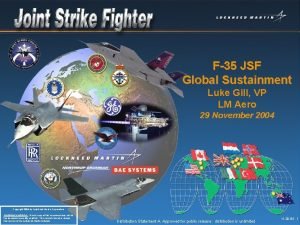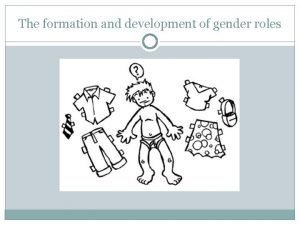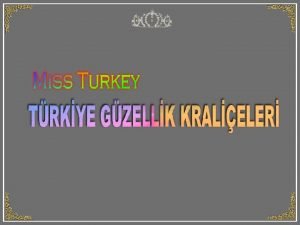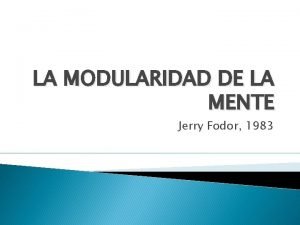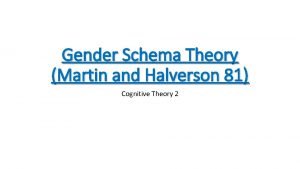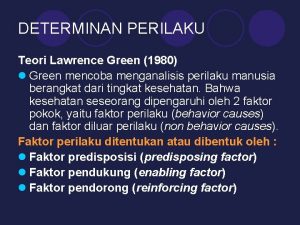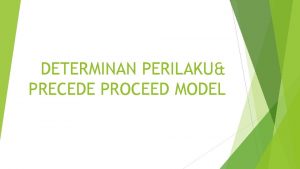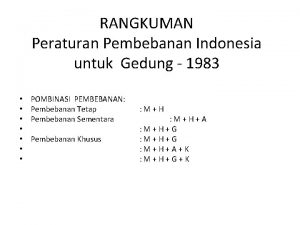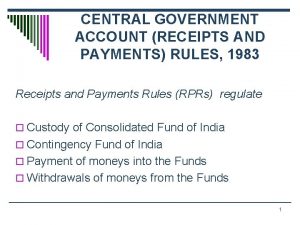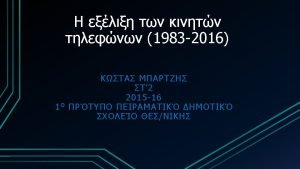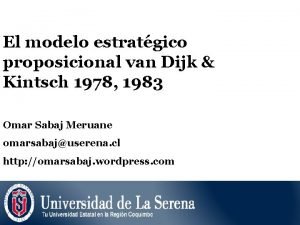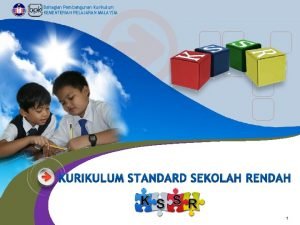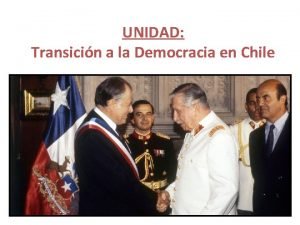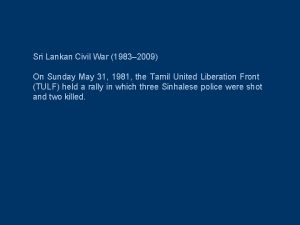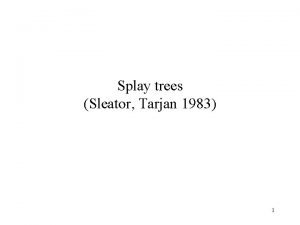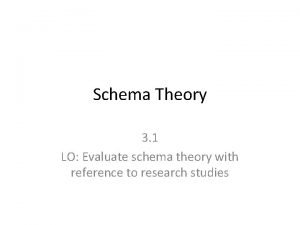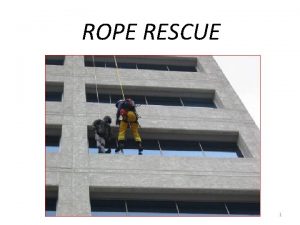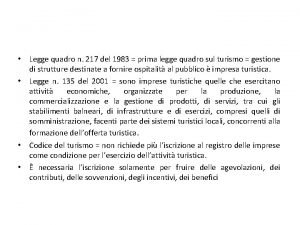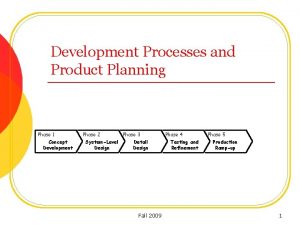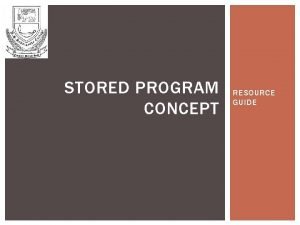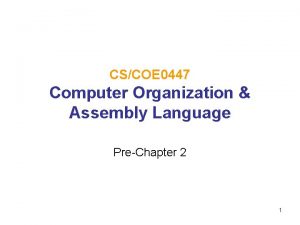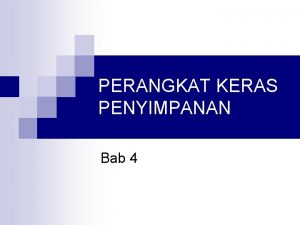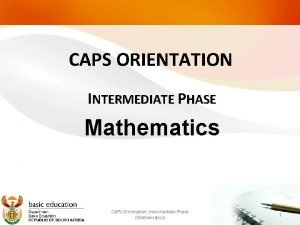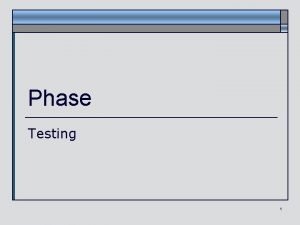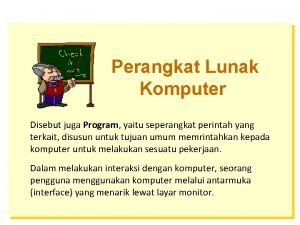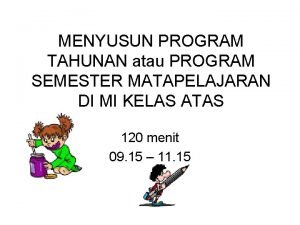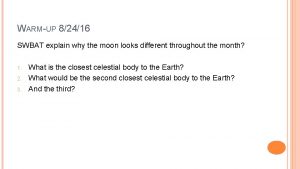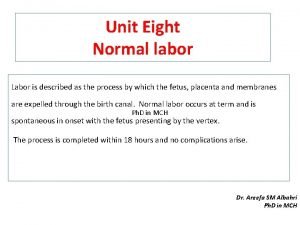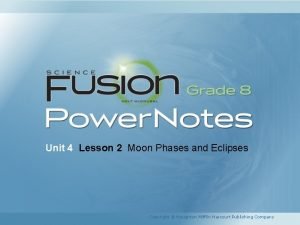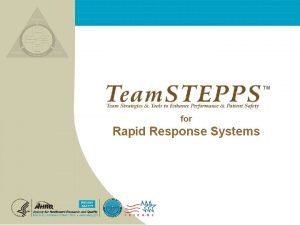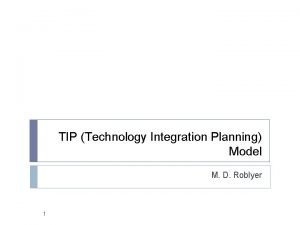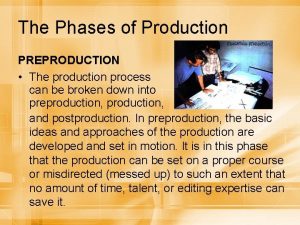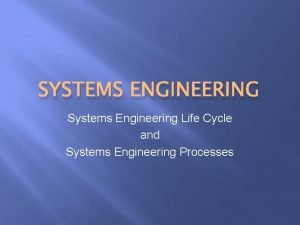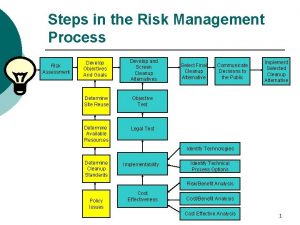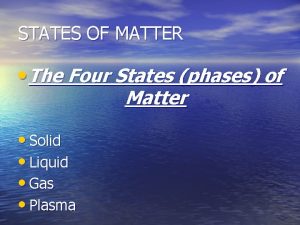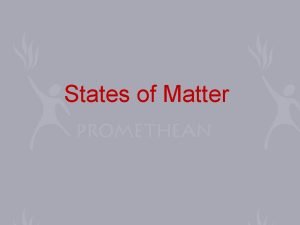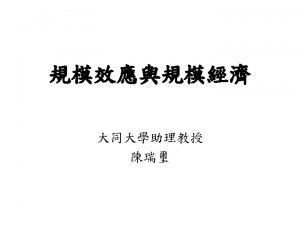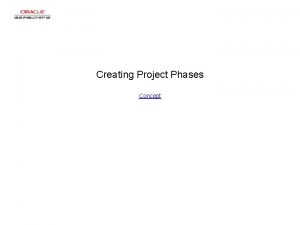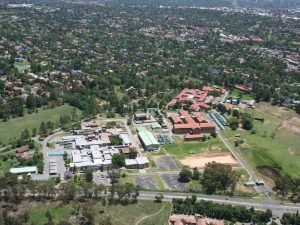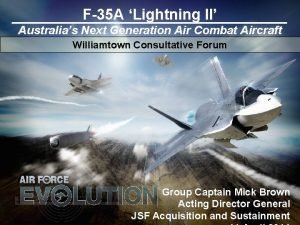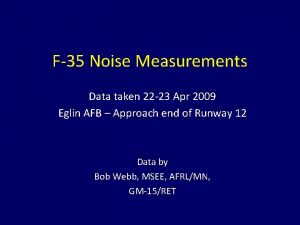OVERWIEW F35 PROGRAM PHASES CONCEPT DEFINITION PHASE 1983












































































- Slides: 76

OVERWIEW

F-35 PROGRAM PHASES CONCEPT DEFINITION PHASE 1983 -1996 (13 years) PRODUCTION AND SUPPORT PHASE 2011 -… (40+ years) 16. 9. 2020 CONCEPT DEMONSTRATION PHASE 1996 -2001 (5 -6 years) SYSTEM DEVELOPMENT AND TEST PHASE 2002 -2011 (10 years) 2

SYSTEM DEVELOPMENT AND DEMONSTRATION PHASE (2001 -2011) • MAİN CONTRACTORS • Airframe: Lockheed Martin • Engine: Pratt and Whitney • 1600 Subcontractors (1500 in USA) • 40. 5 B USD 16. 9. 2020 • PARTNERS • UK 2001 2 B USD • ITALY 2002 1 B USD • NETHERLAND 2002 800 M USD • TURKEY 2002 175 M USD • CANADA 2002 150 M USD • AUSTRALIA 2002 150 M USD • DENMARK 2002 125 M USD • NORWAY 2002 124 M USD • FMS PARTNERS: ISRAEL, SINGAPORE, S. KOREA, JAPAN 3

TURKEY’S PARTICIPATION • 100+ F-35 A PROCUREMENT • INDUSTRIAL PARTICIPATIONS 16. 9. 2020 4

• National Power Elements: • Political Power: Effective use of national power in internal and external problems and international relations (Leadership and good Governance) • Economic Power: Economic resources, goods and services production power, place and power in international trade. 16. 9. 2020 5

• Psycho-Social Power: Character and cultural structure of the nation with its human element and qualified moral values • Military Power: It is the power of the state which is used in the implementation of national policy and the achievement of national targets. (Peace deterrent, superior in battle) • Geography: Geopolitical effect of geographical location 16. 9. 2020 6

• Population Power: Number, structure and quality of population contribution to national power • Science and Technology: The level of development and preparation that a country has in the field of modern technology. • National Security: It is the whole of the activities carried out to protect the state's constitutional order, national existence, integrity, political, social, cultural and economic interests in the international area as well as the rights determined by international treaties against all kinds of internal and external threats. 16. 9. 2020 7

• National Strategy: Protecting the existence and prosperity of a nation is also the general policy adopted by the state in accordance with international law for this purpose. • Military Strategy: It is the sum of the procedures that should be implemented by the military organizations designed to achieve the desired strategic targets. 16. 9. 2020 8

• Air Power Elements: • Modern Systems • Educated Man Power (Professinalism) • Appropriate Management 16. 9. 2020 9

Aircraft Period: • Aircraft design efforts in France and England, • First Flight December 17, 1903, Wright Brothers in USA • First Use in War: Tripoli, October 1911, March 1912 against Turkish Forces by İtaly • Turkish Aviation: On June 1, 1911, Aviation Committee was established (Air Force Day). • First Training in France (Yzb. Fesa, Tgm. Kenan) • First Flight April 26, 1912, in İstanbul (Pilot’s Day) • First Flight School, Yesilkoy, 1912, 17 aircraft 16. 9. 2020 10

Sevr Treaty All combat vehicles and all maintenance and technical centers confiscated Article. 191: “The Turkish armed forces must not include any military or naval air forces. Article. 192: “Within two months the personnel of the Turkish land, sea and air forces shall be demobilised. ” 16. 9. 2020 11

Turkish Air Force in the Republican Period 16. 9. 2020 The Commanders of the Balkan War, the First World War and the War of Independence are now Republican Leaders: The lessons learned and the importance of air power are well known. • 1925: 1925 First Aviation Industry: TOMTAŞ • 1925: 1925 Establishment of Turkish Aviation Association (TAA/Türk Tayyare Cemiyeti-TTC) • 1927: Air Force Inspectorate in NMOD was established and new aircraft were purchased • 1928: 3 Air Battalion (with two detachments each) in Eskişehir, Diyarbakır and İzmir • 1929: Air Surgeon branch was established • 1930: Flight training from Italy 12

Donated aircraft (350 aircraft from 1925 to 1935) Turkish Air Force In The Republican Period Aircraft Engineering and flight physician training from France Three Regiments each with two battalions (6 Battalions/ 12 Detachment) 16. 9. 2020 13

World Aviation in WW I: • Total Production Amount: 219. 799 • Losses in battle: 116. 250 • Turkey's number of aircraft during WW I : 300 • Conclusion: Countries which has advenced technology and industrial revolition were able to generate more aircraft. 16. 9. 2020 14

World Aviation in WW II Aircraft producing (generating) countries and production quantities: • USA : 329. 750 • USSR : 158. 218 (20 Factory) • England : 131. 549 • Canada : 16. 431 • France : 4. 016 16. 9. 2020 15

• Commonwealth : 3. 081 • Germany : 119. 871 • Japan : 76. 320 • Italy : 18. 000 • Hungary : 1. 046 • Romania : 1. 000 • Total produced aircraft: 854. 382 • Turkey's number of aircraft in this period: 700 • Conclusion: Those who understand the importance of aviation in the war have established the Aviation Industry 16. 9. 2020 16

Aviation Industry Initiatives In Turkey Early Republican Era Aviation Industry Initiatives: Republican leaders know the importance of aviation and related industrialization very well. 16. 9. 2020 • Atatürk's Aviation Strategy: • Strong Air Force • National Air Warfare Industry • People Participation in Aviation (Donatios) 17

Air Industry Initiatives • State Enterprises (TOMTAŞ) • THK undertakings • Private Sector Enterprises 16. 9. 2020 General (R) Abidin ÜNAL, Former Commander of TAF 18

• THK/TAA aimed to implement this program; • Türkkuşu workshop transformed into Etimesgut Aircraft Factory (with R & D unit) • Gazi Engine Factory was established • Gazi Wind Tunnel was established. 16. 9. 2020 19

. The planes he manufactured: . VECİHİ K-VI. VECİHİ K-XIV 16. 9. 2020 . VECİHİ K-XV Training Aircraft. VECİHİ K-XVI Transport Aircraft for Nuri Demirağ. XSK Marine rescue, prototype 20

Nuri DEMİRAĞ • Bank clerk, inspector, businessman, railway producer, wealthy, a life devoted to aviation and then politics. • Aircraft Donation Campaign: His response: To Produce Aircraft. • 1936 He established Tayyare Factory with Design Workshop in Beşiktaş • 1936 GÖK Okulları: Aviation schools in Divriği and Flight School in Yeşilköy • He aims GÖK University with 12 Division 16. 9. 2020 21

• 1937 -1938 He sells 45 Gliders and 10 Training Planes to TAA/YHK Nu. D-36 School plane. 16. 9. 2020 Nu. D-38 Passenger plane 22

Nuri DEMİRAĞ • GÖK Schools trained 290 pilots (32, 000 sorties) • Yesilkoy airfield was nationalized, MOD suspended his authority to make revisions for Air Force • 1945 Opposition Party (National Development Party) • 1954 DP Deputy, he proposed contemporary projects, in 1957 passed away 16. 9. 2020 23

ROAD MAP • There are some factors that are effective at the beginning of the Defense Industry Roadmap: • • • THE TRUMAN DOCTRINE MARSHALL PLAN INTRODUCTION TO NATO JHONSON LETTER EMBARGO AFTER THE CYPRUS PEACE OPERATION

AFTER WW II TRUMAN DOCTRINE: (President of the United States) It is a financial and material support project for civil and military purposes (material, service, information sharing and technical personnel) to Turkey and Greece in order to prevent Soviet proliferation on May 22, 1947. In the context of the Agreement; “. . . Ensuring the reinforcement of the security forces that Turkey needs to preserve its freedom and independence, as well as maintaining the stability of its economy. . . " • 400 million in 1947, 225 million in 1948, 211 million in 1949, and this is an ongoing aid until NATO enters. • Control of the use of money in the US jurisdiction, the ownership of the material provided is on the US side. There is also training in the context of help. • 1948 THK aircraft to give up its production target.

AFTER WW II • MARSHALL PLAN: (US Secretary of State) • The goal of the plan is to raise Europe, which was destroyed in battle. • The United States, which is closed by the Monroe doctrine, decides to take part in bilateral or regional defence structures with the decision of Vandenberg. • US Secretary of State George Marshall made a call to Europeans "we want to help, come together". • 1947, including Turkey, 16 countries "European Economic Development Programme" has been ready and presented to the United States.

MARSHALL PLAN AND TURKEY Assistance to Turkey. The aid started in 1948 the priority was agriculture, health(malaria, tuberculosis etc). At first wheat and 30, 000 agricultural vehicles were provided. • Project Fields • Agriculture • Highways, State railways, state sea roads • Water Works(DSİ) • Etibank • Sümerbank • Soil Crops Office(TMO) • Monopoly(TEKEL) • Oil Office (PETROL OFİSİ) • Mining and exploration (MTA)

AVIATION INDUSTRY HISTORY IN THE WORLD USA MILITARY A/C MANUFACTURER • LOCKHEED MARTIN (GENERAL DYNAMICS) • HUGES (HEL) • NORTROP GRUMMAN 16. 9. 2020 BOEİNG ( Mc DOUGLES) 28

JHONSON’S LETTER • Cyprus: 1959 Zurich, 1960 London agreements were established with the Republic of Cyprus. • 1963 the Greek «Enosis» initiative (Annexation to Greece) • Turkey has decided military intervention. • June 6, 1964 U. S. President Jhonson’s Letter: • «In accordance with 1947 and other agreements do not use U. S. weapons for this purpose. United States and NATO cannot support if the Soviets intervene» • Deterrent initiative with Air Force: PLT. Yzb. The Martyrdom of Cengiz Topel.

Jhonson's letter has once again demonstrated the need to revive the national warfare industry. AİR WARFARE INDUSTRY INITIATIVES In the context of ground warfare weapons, MKEK is concentrated in the field of ground warfare weapons and vehicles. Our shipyards have begun construction of our own landing vessels, battleships and submarine projects have accelerated For Airwarfare Industry; because of the complexity of Jet technology, no government project could be developed.

AIR WARFARE INDUSTRY INITIATIVES • 1 ASMC-Eskişehir: It is resposible for • Jet aircraft for the reconditioning and factory level maintenance and repair of the airframe and engines. Aircraft body hydraulic, mechanical, Pünomatik, electric, avionics systems maintenance, testing, modification, modernization, parts production, painting • Aircraft engine: Turbofan, turbojet, turboprop, Turboschaft; Measurement, maintenance, repair, dyeing, balancing, functional testing and F-35 Engine Depo level Maitenance. • 2 ASMC-Kayseri: propeller (Turboprop engine) planes; C-130 e/B C-160, CN 235, SF-260, T-41, UAV replenishment and depot level maintenance and repair. KC-135 (Turbofan engine) depot level maintenance and repair. • 3 ASMC-Ankara: Electronics, communication, radar systems, depot level maintenance and Repair

Turboprop

turbofan

turbojet

AIR WAR INDUSTRY DEVELOPMENTS • Consolidation of foundations of strengthening of Army and Navy with the Air Force Strengthening Foundation (HKGV). • Establishment of the Turkish Armed Forces Empowerment Foundation (TSKGV). • TSKGV funded investments: • TUSAŞ, • TAI • TEI, • ASELSAN, • ROKETSAN, • HAVELSAN, • İŞBİR, • ASPİLSAN

Joint Production: F-16 s in TAIjo • 160 Blok 30/40 for Turkey • 80 Blok 50 for Turkey • 40 Blok 40 for Egypt • 40 Blok 50+ for Turkey

Other Joint Productions in TAI • F-35 medium body (joint production) • F-16 Structural modification, life extension • AEW-C (HİK) Project • Production of spare parts for Boeing company • Production of spare parts for Airbus company • Common production of COUGAR helicopter production

Design and production in TAI • T-38 Arı Modernisation • Atak Helicopter production • A-400 m front/middle body, paratrooper gate, tail cone • C-130 Aviyonic Modernisation • Meltem Project for Navy • Yarasa Project for Spacial Forces • HÜRKUŞ • ANKA S UAV/RPV • HÜRJET • TF-X (MMU) • Genel Maksat helikopteri ve Muharebe Arama Kurtarma Helikopteri • Satalite Projects; Göktürk-1, Göktürk-2 and Göktürk series.

TEI: SKGV, TAI, THK, GE ortaklığı ile 25 Haziran 1985 TEI TURKISH ENGINE INDUSTRY TEI F-16 Engine Production Test calibration, 2000 HP Helicopter engine design and production UAV Engine Design and production SOM missile engine design and production (KALE)

F-110 and F-129 motors commonly produced by TEI for F-16

UAV AND HELICOPTER ENGINES DESIGNED BY TEI X

ASELSAN’S AVIATION PRODUCTIONS HASSAS GÜDÜM KİTİ: HGK 1, 2, 3, 4 LASER GÜDÜM KİTİ: LGK

ASELSAN’S AVIATION PRODUCTIONS ASELPOD FOR F-16 MISSION COMPUTERS: ATTACK HEL, T 38, F-16

ELEKTRONİK HAVELSAN SANAYİİ: ORGANIZATION HAVELSAN • Turkish Armed Forces Strengthening Foundation (TSKGV) • THK’s Partnership 0. 5% • Organization Intent: Software ACTIVITES • Command Control Systems • Training and Simulation • Information Processing and communication • Cyber security

ROKETSAN Organization Partners: • TSKGV • MKEK • ASELSAN • HAVELSAN • VAKIFBANK • Organization Intent: Rocket and missile production for TSK • Business areas: • Rocket/guided Rocket • Missile/guided missile (SOM) • Air Defense Systems • Airborne Anti-Tank missile • Armor • Fuse • Air Munitions

ARMY: ARMY 2246 MAIN BATTLE TANK 9031 ARMORED VEHICLE TURKISH FORCES (ARMY) 2000 ARTILERY 475 HELICOPTER GLOBAL FIRE POWERGRADE: 9

NAVY TURKISH NAVY FRIGATE : 16 CORVET 10 SUBMARINE 12 PATROL 34 MINE WARFARE 11 AMFIBI 33 TOTAL : 194 GLOBAL FP GRADE: 12

Force Structure – Combat Aircraft -35 F F-4 E ~ 270 Combat Aircraft F-16

E-7 T Airborne Early Warning & Control Aircraft KC-135 R UAVs C 2 E-7 T ~ 140 Heli Support Aircraft A 400 M CN-235 C-130 C-160 § 4 x E-7 T aircraft. § It is an airborne radar platform. § It provides radar coverage to command & control centers and controls the fighter aircraft in the air.

A-400 M Strategic Airlift § 7 x A 400 M heavy transport. 3 more are to be procured. KC-135 R UAVs C 2 ~ 140 Heli E-7 T Support Aircraft A 400 M CN-235 C-130 C-160 § A 400 M provides strategic airlift availing transportation of personnel, equipment and vehicles to long distances. § It can carry a 30 ton cargo to a distance of more than 2. 000 NM. nonstop range 2. 000+ NM

C-130 and C-160 Transport Aircraft C-130 C-160 KC-135 R UAVs C 2 ~ 140 Heli E-7 T Support Aircraft A 400 M CN-235 C-130 C-160 § C-130 and C-160 are medium transport aircraft. § These are the workhorses of our cargo fleet. § Besides carrying military personnel and cargo between airbases, they are also used for delivering humanitarian assistance to the victims of natural disasters. § C-160 being replaced by A 400 M

AS-532 Cougar and UH-1 H Helicopter KC-135 R UAVs C 2 ~ 140 Heli E-7 T Support Aircraft A 400 M CN-235 C-130 C-160 § AS-532 Cougar and UH-1 H helicopters are used for Personnel Recovery missions. § Besides military use, these assets also serve as civilian aid and humanitarian assistance if needed.

Unmanned Air Vehicles (UAV) KC-135 R UAVs C 2 ~ 140 Heli E-7 T Support Aircraft A 400 M CN-235 C-130 C-160 § ANKA and GOZCU are the UAVs in our inventory. § They perform Intelligence, Surveillance and Reconnaissance (ISR) missions. § Laser Targeting is also a key capability.

GLOBAL FIRE POWER: TOP 10 • • • 1. USA 2. RF 3. CHINA 4. INDIA 5. FRANCE 6. UK 7. S. KOREA 8. JAPAN 9. TURKEY 10 GERMANY GLOBAL AIR POWER: TOP 10 • 1. USA • 2. RF • 3. CHINA • 4. INDIA • 5. S. KOREA • 6. JAPAN • 7. PAKISTAN • 8. FRANCE • 9. EGYPT • 10 TURKEY

STRATEGIC ATTACK AIRCRAFT

Mission: The B-2 Spirit is a stealth bomber capable of carrying both conventional and nuclear munitions

B-52 STRATEGIC BOMBER

STRATEGIC AIR POWER TU-160 BLACKJACK TU-22 BACKFIRE

TU-95 BEAR

F-22 F-35

SU-57 STEALTH FIGHTER

SATELLITES CURRENTLY ORBITING

HEO: HIGH EARTH ORBIT : 22. 300 NM • COMMUNICATION SATELLITES • WX SATELLITES SPACE ORBITS MEO: MEDIUM EARTH ORBIT : 1000 -6000 NM • GPS SATELLITES • DEFENSE SATTALITES (EARLY WARNING) LEO: LOW EARTH ORBIT : 450 NM • OBSERVATION SATELLITES

TURKISH SATELLITES PROGRAMS COMMUNICATION SATELLITE PROGRAMS (TÜRKSAT SERIES) OBSERVATION SATALLITE PROGRAMS (GÖKTÜRK SERIES) SPACE AGENCY (TSA/TUK)

TURKISH COMMUNICATION SATELLITES TÜRKSAT SERIES • TÜRKSAT-3 A : 42 E • 2008, ALCATEL • 3 TON • ACTIVE • TÜRKSAT-4 A: 42 E • 14 FEB 2014, JAPAN MITSUBISHI ELECTRIC • 5 TON, 30 YEARS, BAYKONOR • ACTIVE • TÜRKSAT-4 B: 42 E • JANUARY 2016, JAPAN • 5 TON, 30 YEARS, BAYKONOR • ACTIVE • TÜRKSAT-6 A • NATIONAL DESIGN AND PRODUCTION • 2019

Space Road. Map 2016 GÖKTÜRK-1 (0. 5 m E/O) 2011 Rasat (8 m E/O) 2012 GÖKTÜRK-2 (2. 5 m E/O) lo e v e p e em P / t n ur c o r nt e m D ope l Co e v De s u eo n e g Indi e n e m 2024 GÖKTÜRK Replacement 1 (< 0. 5 m E/O) t 2028 2025 2021 İMECE (0, 88 m E/O) İMECE-2 (0, 5 m E/O) GÖKTÜRK-3 (1 m SAR) 2030 2034 2036 2003 Bilsat (26 m E/O) 2039 >2040 Early Warning GÖKTÜRK Replacement 3 Regional Navigation/Timing GÖKTÜRK Replacement 2 Electronic Support (Constellation) Text : In-orbit Text : Initiated Text : Planned

SECURITY FOR AVIATION SECURITY: SECURITY FOR CIVIL AVIATION 16. 9. 2020 STANDARDINIZATION CERTİFİCATION 67

STANDARDIZATION 01 02 03 INTERNATIONAL CIVIL AVIATION ORGANIZATION (ICAO) EUREPEAN ORGANIZATION FOR SAFETY AIR NAVIGATION (EUROCONTROL) EUREPEAN CIVIL AVIATION CONFERANCE (ECAC) 16. 9. 2020 68

CERTIFICATION INPUTS FROM CERTIFICATION AUTHORITIES • ICAO STANDARTS • FAA STANDARTS • FEDERAL AVIATION ADMINISTRATION • EUROCONTROL • ECAC • EASA STANDARTS • EUROPEAN AVIATION SAFETY AGENCY 16. 9. 2020 FAA EASA 69

TECHNOLOGY STRATEGY FOR THE NATIONAL AVIATION INDUSTRY: • Definitions: • NATIONAL TECHNOLOGY is the systems and technologies that need to be developed domestically in the country, even if it is supplied from abroad for safety reasons. • CRITICAL TECHNOLOGY. They are the technologies that can not be obtained from abroad or that may jeopardize the operation for a variety of reasons and therefore must be required in the country.

TECHNOLOGY REQUIREMENTS WITH THE PRIORITY AND NEEDS FOR NATIONAL DEFENSE IAW Turkey’s Science and Technology Strategy 2023 6 11 «Technology activity topics» and 109 «technology area» were taken into consideration. 1 • Information Technologies 2 • Sensor, electronics and communication technologies 3 • Land, sea, undersea and air Platform technologies 4 • Propulsion, Power and energy technologies 5 • Strategic materials Technologies 6 • Weapons and ammunition Technologies 7 • Technologies for space and aerospace use 8 • Modelling/simulation/analysis and Training technologies 9 • Unconventional system, production technologies and nanotechnology: 10 • Biotechnology, Biomedical and health Technologies 11 • Navigation, guidance, control and micro electro-mechanical system Technologies

Six types approches • Top-down Planning • Resource- constrained planning • Incremental planning • Capability-based planning • Scenario-based planning • Threat-based planning 16. 9. 2020 General (R) Abidin ÜNAL, Former Commander of TAF 72

Defense Planning Approaches • Scenario-based planning is self-explanatory. Planners use hypothetical events and environments as test beds to determine what capabilities and/or force structures they may need to meet future threats in different parts of the world. 16. 9. 2020 73

• It is appropriate to determine which areas of capabilities should be addressed first and immediately after MSGB but before TÜMAS. • Prioritization process after MGSB and prior to TÜMAS eliminates some difficulties and keeps the streamline in defense planning process. Some examples for prioritization: • • To develop Air Power first or to develop maritime power first. The development of skills in cyber defense, To development long range sensitive engagement or Counter-terrorism capabilities. • As a result, prior to MGSB and before TUMAS «Prioritized Defense Planning» study will provide a significant solution to the problem. • After MGSB and the Prioritized Defense Plan finalization; TÜMAS process and the procurement process begins. • Defense Planning Summary: MGSB (with Prioritized Defence Plannig) – TÜMAS-- SHP– OYTEP 16. 9. 2020 74

Identifying a required (needed) weapon system • As set forth by statute and regulation, from concept to deployment, a weapon system must go through a three-step process of identifying a required (needed) weapon system, establishing a budget, and acquiring the system. These three steps are organized as follows: • 1. The Joint Capabilities Integration and Development System (JCIDS) —for identifying requirements. • 2. The Planning, Programming, Budgeting, and Execution System (PPBE)—for allocating resources and budgeting. • 3. The Defense Acquisition System (DAS)—for developing and/or buying the item. 16. 9. 2020 75

2. The Planning, Programming, Budgeting, and Execution System (PPBE)—for allocating resources and budgeting. • Six Fundamental Ideas: • 1. Decisions should be based on explicit criteria of national interest, not on compromises among institutional forces • 2. Needs and costs should be considered simultaneously • 3. Major decisions should be made by choices among explicit, balanced, feasible alternatives • 4. The Secretary of Defense should have an active analytic staff to provide him with relevant data and unbiased perspectives • 5. A multiyear force and financial plan should project the consequences of present decisions into the future • 6. Open and explicit analysis, available to all parties, should form the basis for major decisions 16. 9. 2020 76
 Luke gill
Luke gill Phases of matter concept map
Phases of matter concept map Normal phase vs reverse phase chromatography
Normal phase vs reverse phase chromatography M tswett pronunciation
M tswett pronunciation Mobile phase and stationary phase
Mobile phase and stationary phase Stationary phase
Stationary phase Normal phase vs reverse phase chromatography
Normal phase vs reverse phase chromatography Line current and phase current
Line current and phase current Which detector used in hplc
Which detector used in hplc Phase to phase voltage
Phase to phase voltage Broad phase vs narrow phase
Broad phase vs narrow phase David reimer
David reimer Snehandu b. kar (1983)
Snehandu b. kar (1983) Pp 10 1983
Pp 10 1983 Türkiye güzeli gizem memiç
Türkiye güzeli gizem memiç Fodor 1983
Fodor 1983 Benedict anderson 1983
Benedict anderson 1983 Martin halverson
Martin halverson Diamond dybvig 1983
Diamond dybvig 1983 Lawrance green
Lawrance green Precede proceed model lawrence green
Precede proceed model lawrence green Peraturan pembebanan indonesia terbaru
Peraturan pembebanan indonesia terbaru Kohlberg moral development theory
Kohlberg moral development theory Central government account (receipts and payments) rules
Central government account (receipts and payments) rules Dyna tac
Dyna tac Van dijk 1983
Van dijk 1983 Everett m. rogers (1983)
Everett m. rogers (1983) Bahagian kurikulum kementerian pelajaran malaysia
Bahagian kurikulum kementerian pelajaran malaysia Uu 6 1983
Uu 6 1983 1983 chile
1983 chile Brainstorm 1983
Brainstorm 1983 1983
1983 Tarjan 1983
Tarjan 1983 Tucson flood 1983
Tucson flood 1983 Martin & halvorson (1983)
Martin & halvorson (1983) Traszka 1983
Traszka 1983 Evaluate
Evaluate General safety rope
General safety rope Legge 217/1983
Legge 217/1983 Concept development phase
Concept development phase Mind map on states of matter
Mind map on states of matter Phase change concept map
Phase change concept map Carl rogers ideal self vs real self
Carl rogers ideal self vs real self Pengertian marketing concept
Pengertian marketing concept Stored-program concept
Stored-program concept Stored program concept
Stored program concept Storage program concept
Storage program concept Telogen definition forensics
Telogen definition forensics Caps mathematics intermediate phase lesson plans
Caps mathematics intermediate phase lesson plans Implementation phase definition
Implementation phase definition Differences between sequential and event-driven programming
Differences between sequential and event-driven programming Progam progam komputer disebut juga dengan istilah
Progam progam komputer disebut juga dengan istilah Program tahunan adalah
Program tahunan adalah Spreadsheet adalah program…
Spreadsheet adalah program… Microsoft excel merupakan aplikasi pengolah
Microsoft excel merupakan aplikasi pengolah Program ms word merupakan program …. *
Program ms word merupakan program …. * Phases of labour
Phases of labour Moon phases when the sun is on the left
Moon phases when the sun is on the left True labour pains
True labour pains Lesson 2 moon phases and eclipses answer key
Lesson 2 moon phases and eclipses answer key Steps in community development process
Steps in community development process Phases of dental treatment planning
Phases of dental treatment planning I pass the baton nursing
I pass the baton nursing Technology integration planning (tip) model
Technology integration planning (tip) model Example of fab analysis
Example of fab analysis Phases of production
Phases of production 4 phases of the moon
4 phases of the moon Magic school bus moon phases
Magic school bus moon phases Phases of the french revolution
Phases of the french revolution J shaped muscular sac
J shaped muscular sac Chemical digestion
Chemical digestion Five phases of the cell cycle
Five phases of the cell cycle 30 years war phases
30 years war phases Systems engineering life cycle phases
Systems engineering life cycle phases Risk management process
Risk management process Four phases of matter
Four phases of matter 4 phases of matter
4 phases of matter
